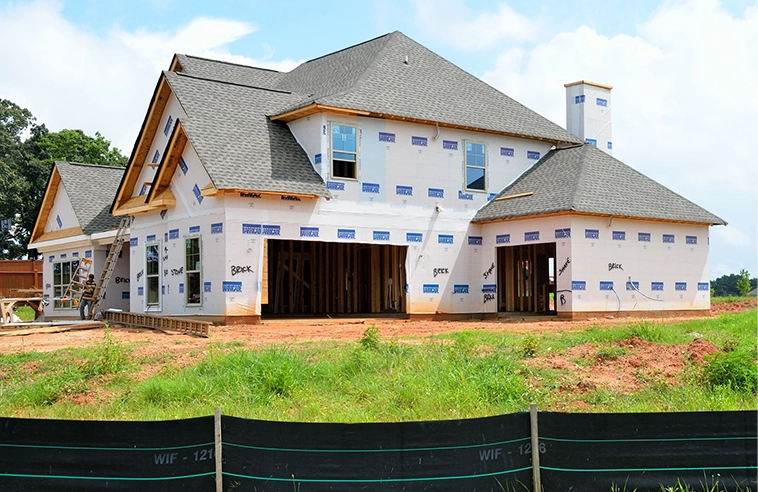Building Information Modeling: What Is It? And What Are Its Benefits?

Building Information Modeling (BIM) involves the creation of a 3D digital model of a building. But it’s much more than that. Any 3D Computer-Aided Design (CAD) model can help us visualize the geometry of a building. However, BIM goes beyond that by having the potential to include information about all the components of the building. So although visualization is an important benefit of BIM, there are other benefits that are a result of the information that can be included in the model.
Here, we’ll look at some of the potential benefits (by no means all of them!) of using BIM technology and how they depend on the information included in a BIM model.
Improved Collaboration and communication
BIM technology enables collaboration. There’s a single, centralized model that can be accessed remotely by all the authorized stakeholders (owners, architects, engineers, general contractors, tradespeople, and so on) on a project. Whenever a change is made in the model, other parts of the model change in response, as required. Because there’s a single source of truth, there’s no risk of someone using an out-of-date version of the plan, which reduces the risk of errors. In turn, this minimizes re-work and lowers costs.
Clash detection
Another way in which BIM reduces rework is through clash detection. With the use of BIM software, it’s easy for a high level of detail to be encapsulated in the model, with accurate specifications for air conditioning ducts, electrical cable trays, and all the other components of a building. It’s easier to spot clashes in the 3D model than in 2D representations, and some BIM software automatically highlights potential clashes. This means that issues can be addressed before construction starts, reducing re-work and lowering costs.
In the 2020 Construction Technology Report the authors write:
“Coordination and Clash Detection continue to be the most prevalent use case for BIM.”[i]
Taking advantage of prefabrication
The digital data associated with particular prefabricated components — such as an access ladder or a diesel standby generator — can be plugged into the model and thus inform other aspects of the design.
In the other direction, if an object is designed in the model, its specifications can be used to prefabricate a custom component. BIM data can be used to create production drawings for manufacturing machines. Using prefabrication can increase the efficiency of a project, potentially reducing overall costs.
Better cost estimation
Because the data in the model is very specific and detailed, it can be used to calculate the exact quantities needed for all the materials — from concrete and steel studs to drywall and lightbulbs.
And because the current cost of, say, steel studs from a particular manufacturer can be part of the included data, the BIM software can calculate the total cost for all the steel studs that are needed for the building.
Better scheduling
Another significant cost that can be estimated more accurately using BIM technology is labor. This is because labor scheduling information can be included in the model. The software can generate graphical depictions of where people need to be and when. The more complex a project is and the more interdependent the different crews are, the more helpful this is.
Also, if one crew is delayed for some reason — supply chain issues, for example — this information can be plugged into the model, which can calculate the effects on other aspects of the schedule.
The image below shows the percentage of contractors reporting moderate or high/very high levels of improvement on various aspects of scheduling by using BIM.

Image from SmartMarket Report:Accelerating Digital Transformation Through BIM, Dodge Data & Analytics
Who’s using BIM?
BIM is mandated on at least some types of project in many countries and 41% of contractors are using BIM on 50% or more of their projects.[ii] The image below shows countries with existing and planned BIM mandates.

Image from Autodesk

Image from SmartMarket Report:Accelerating Digital Transformation Through BIM, Dodge Data & Analytics
However, there are companies that are losing out on projects because they’re not using BIM. As reported in the 2020 Construction Technology Report, 29% of firms responded “We do not bid on projects involving BIM.”[iii]
What about you? Do you currently use BIM, or are you anticipating using it in the future? Or is it not something you plan to use?
Learn more:
Top 5 Benefits of BIM Construction
What is Building Information Modeling?
Building Information Modeling (BIM)
8 Top Benefits of BIM in Construction – And How to Get Started
Video: The Future of Digitalization and Automation in Construction
[i] 2020 Construction Technology Report, JB Knowledge, p. 46
[ii] SmartMarket Report: Accelerating Digital Transformation Through BIM, Dodge Data & Analytics, p. 4
[iii] 2020 Construction Technology Report, JB Knowledge, p. 45




